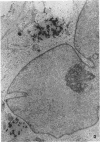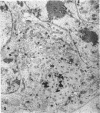Abstract
Incorporation of 3H-thymidine by BSC-1 cells infected with Shope fibroma virus was studied by means of high-resolution electron microscopic radioautography. One-hour pulses with the radioactive precursor were given at various times after infection, during a one-step growth cycle of the virus. In the cytoplasm of infected cells, reacted grains occurred over foci of viroplasm; these foci are believed to represent the true sites of viral deoxyribonucleic acid (DNA) replication. Shope fibroma virus DNA synthesis began before 3 hr postinfection, reached a maximum at 8 to 9 hr, and then declined rapidly. It was demonstrated that the decline in 3H-thymidine uptake is correlated with the onset of viral morphogenesis. In comparison with the noninfected culture, the nuclear labeling, which reflects host DNA metabolism, was slightly reduced by 4 hr postinfection. Inhibition became more marked as infection progressed, and host DNA synthesis was almost completely suppressed in late stages of viral development.
Full text
PDF
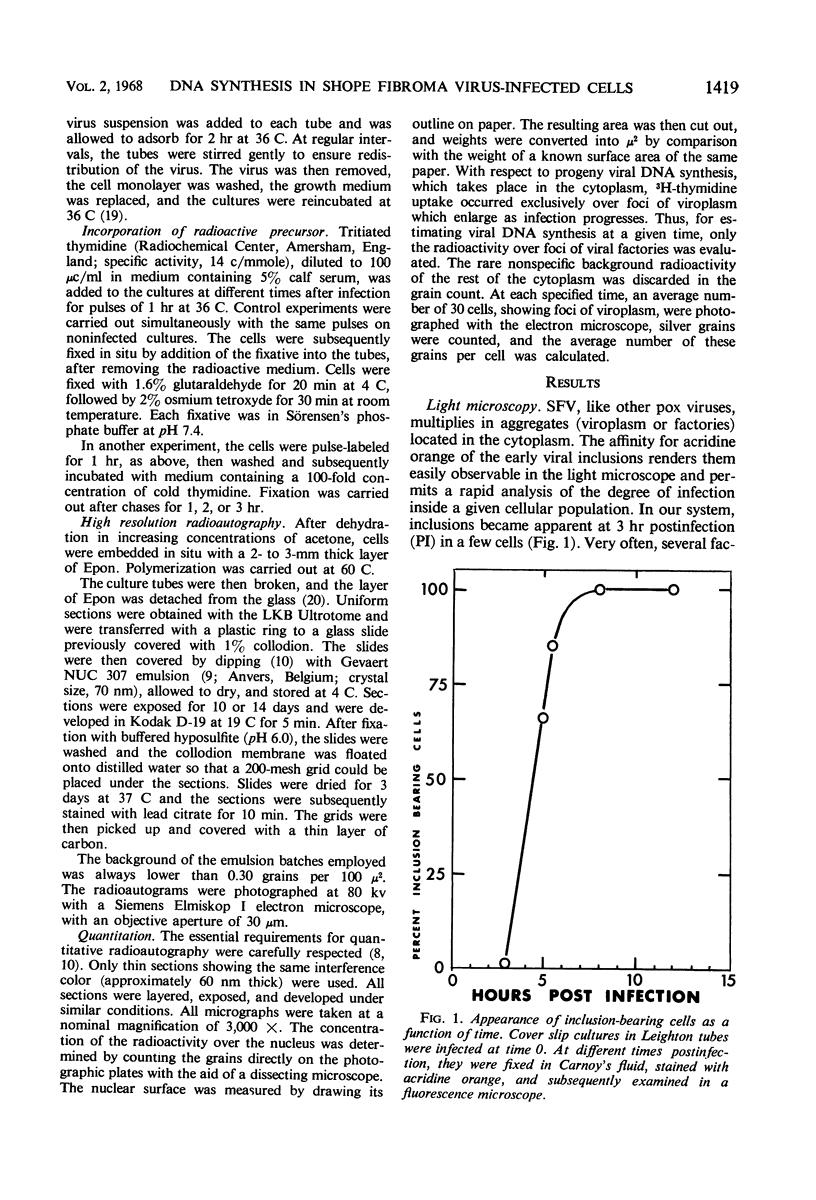

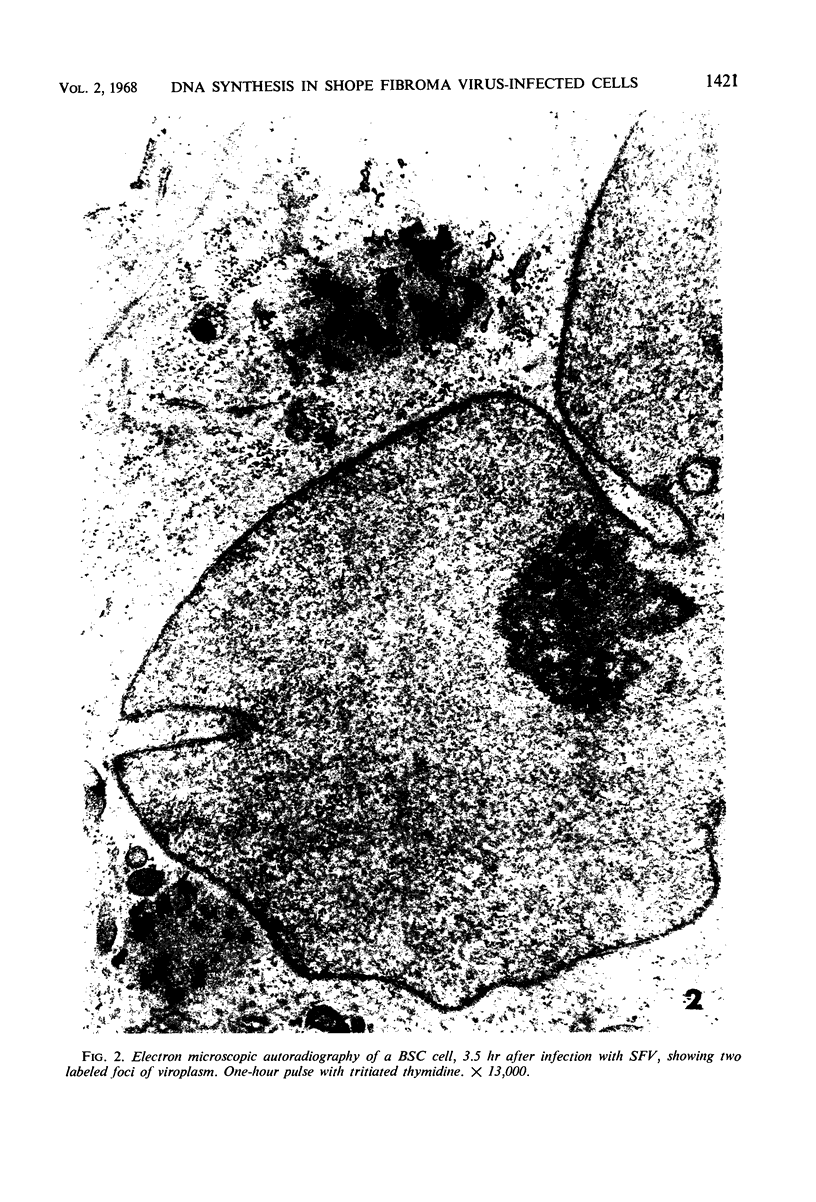
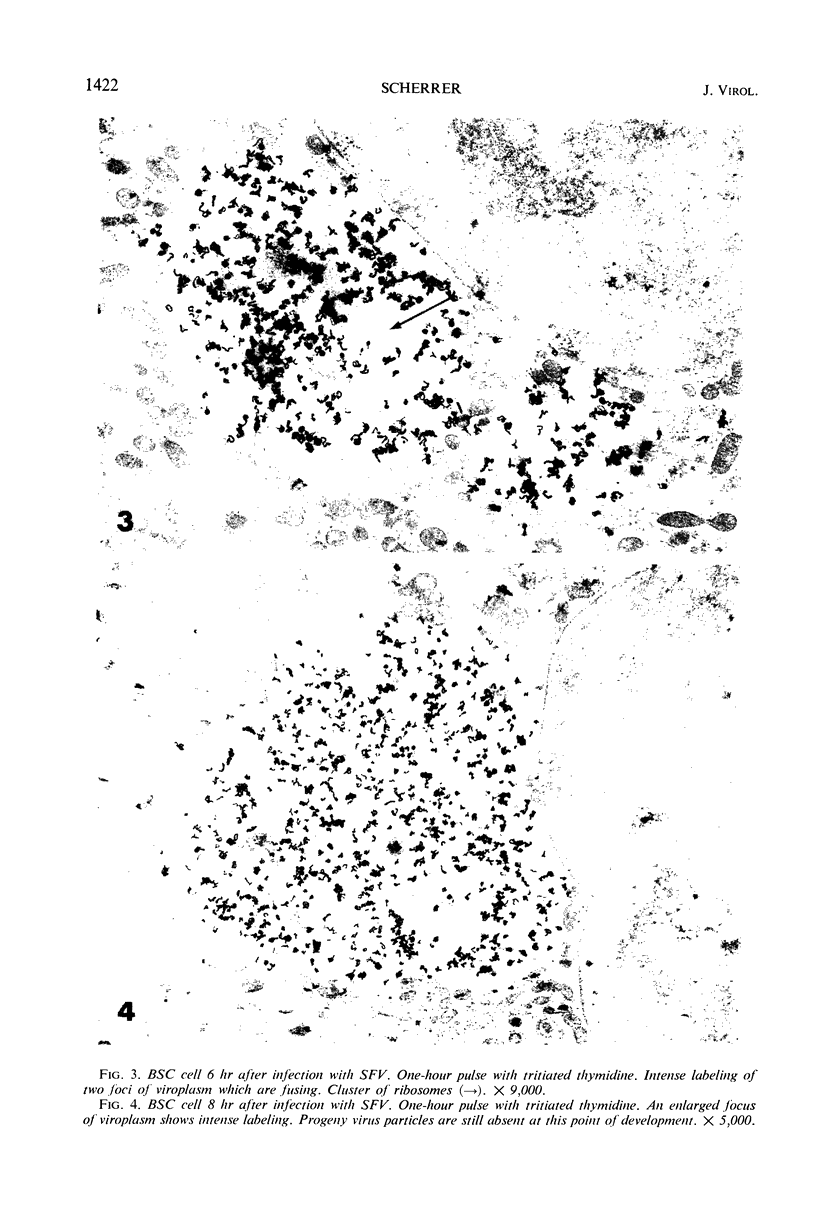
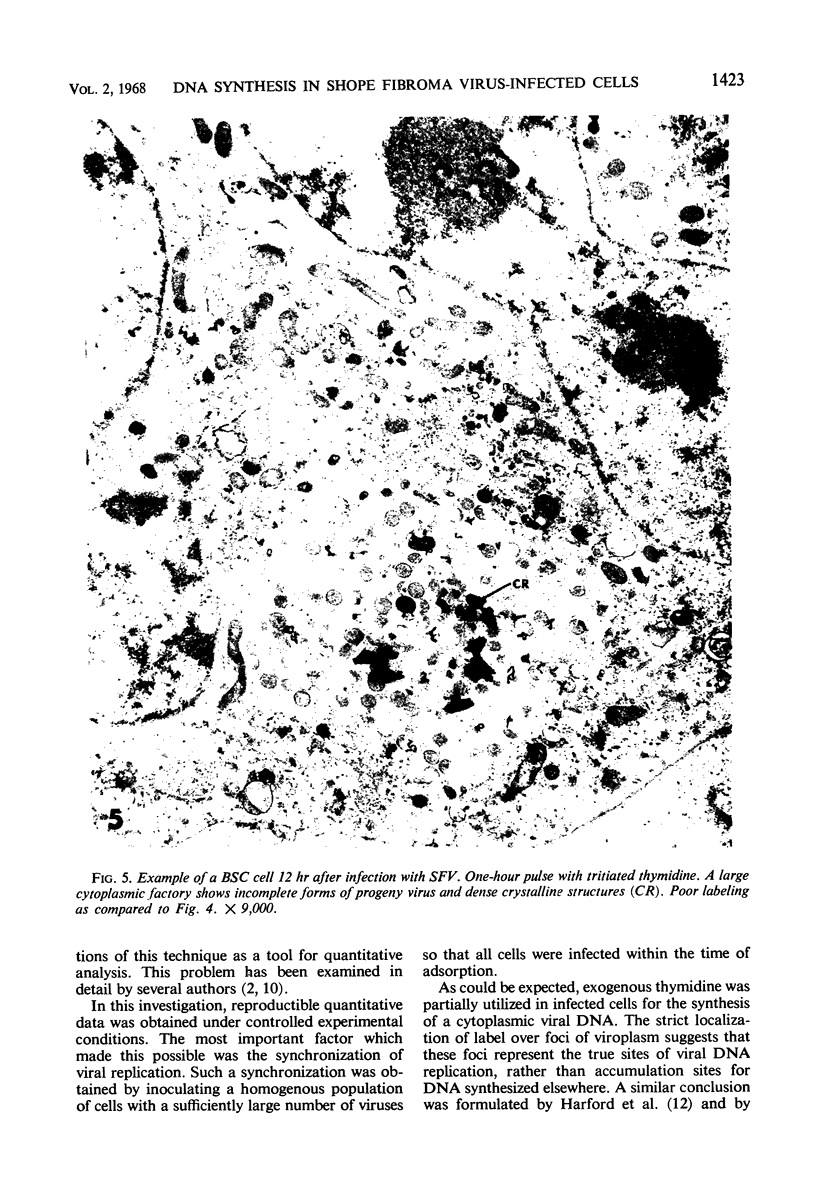
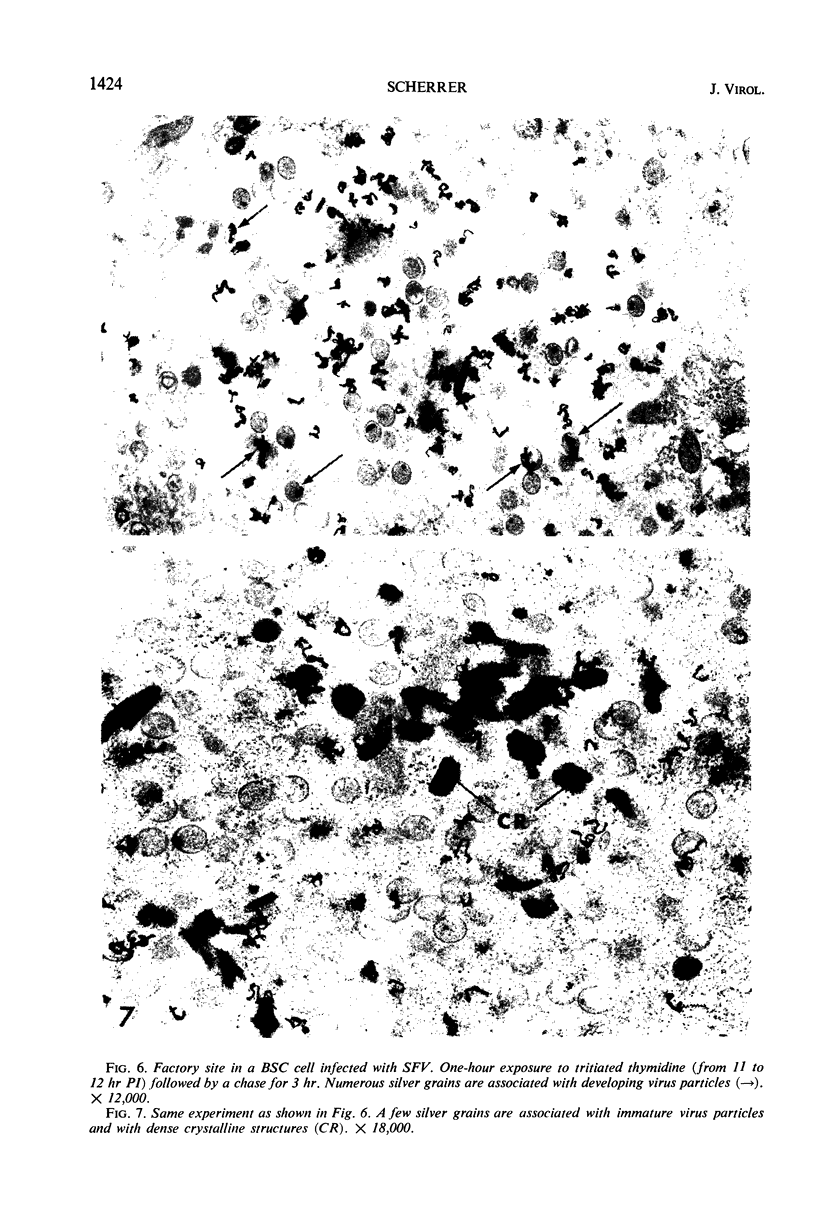
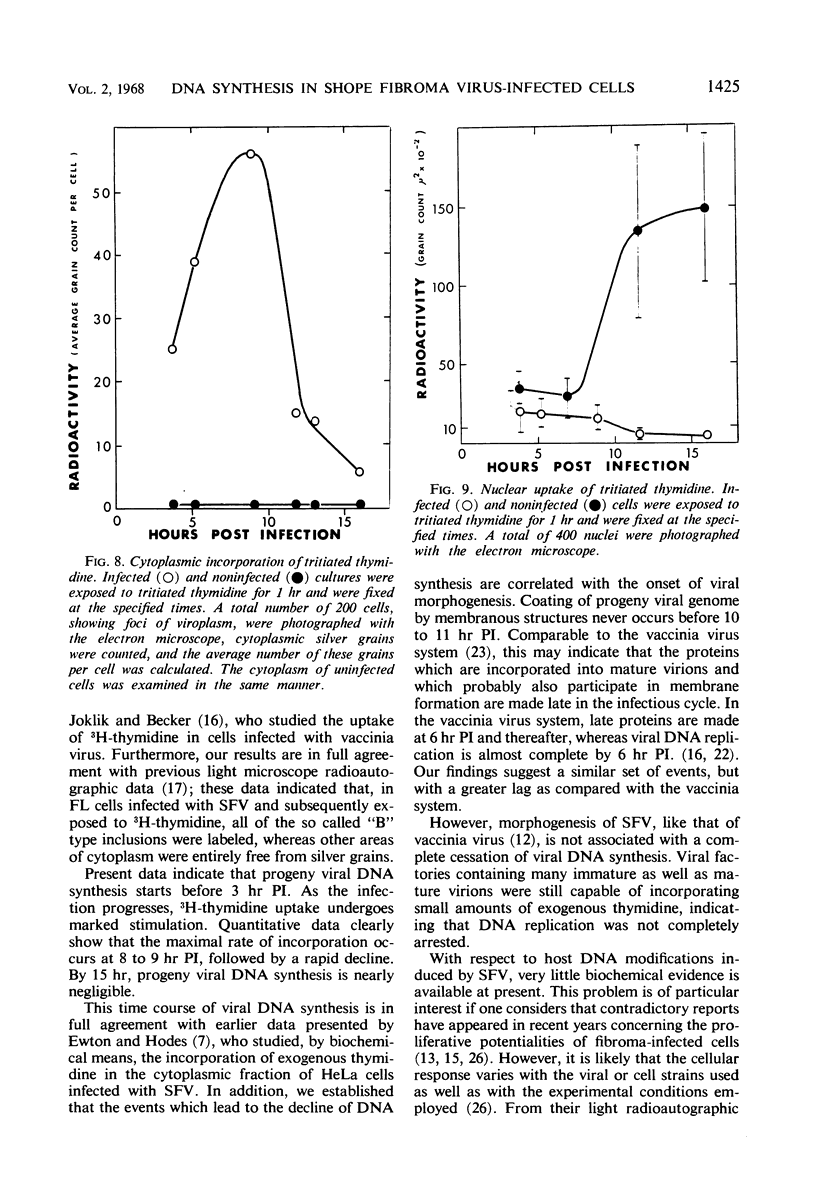
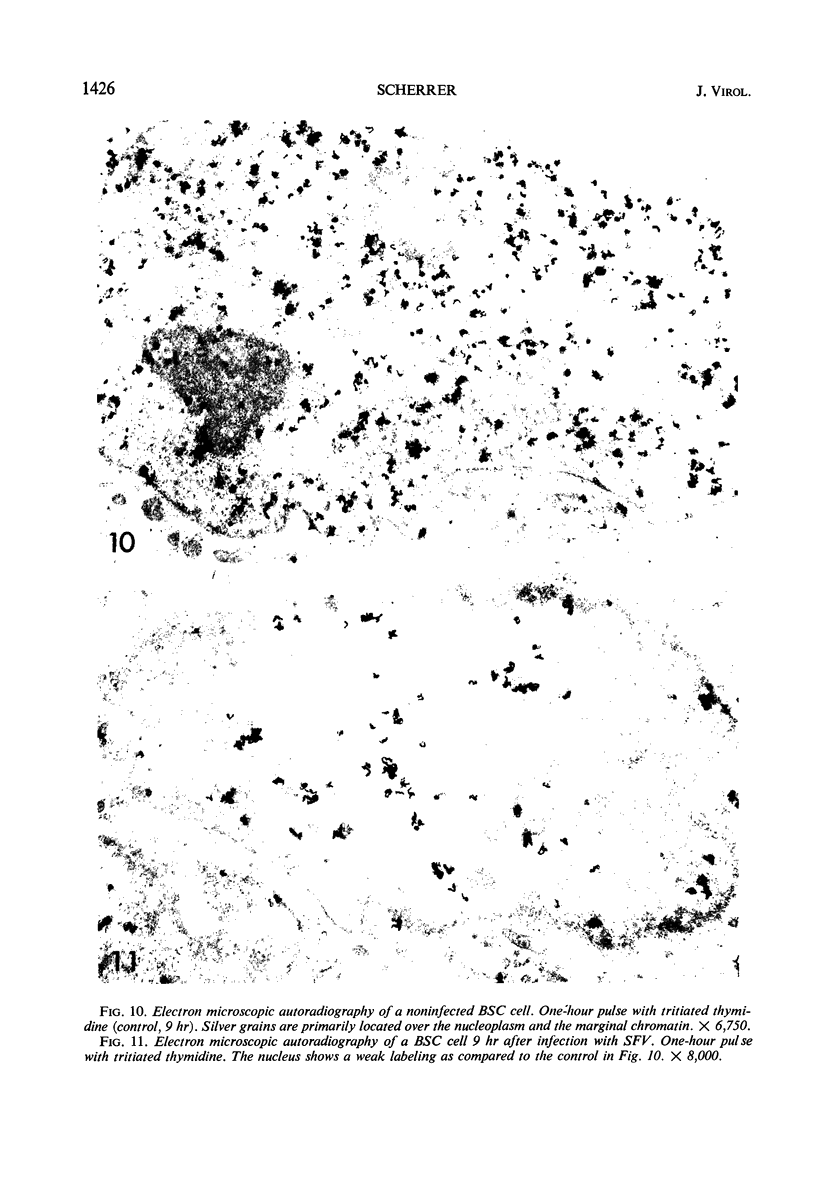
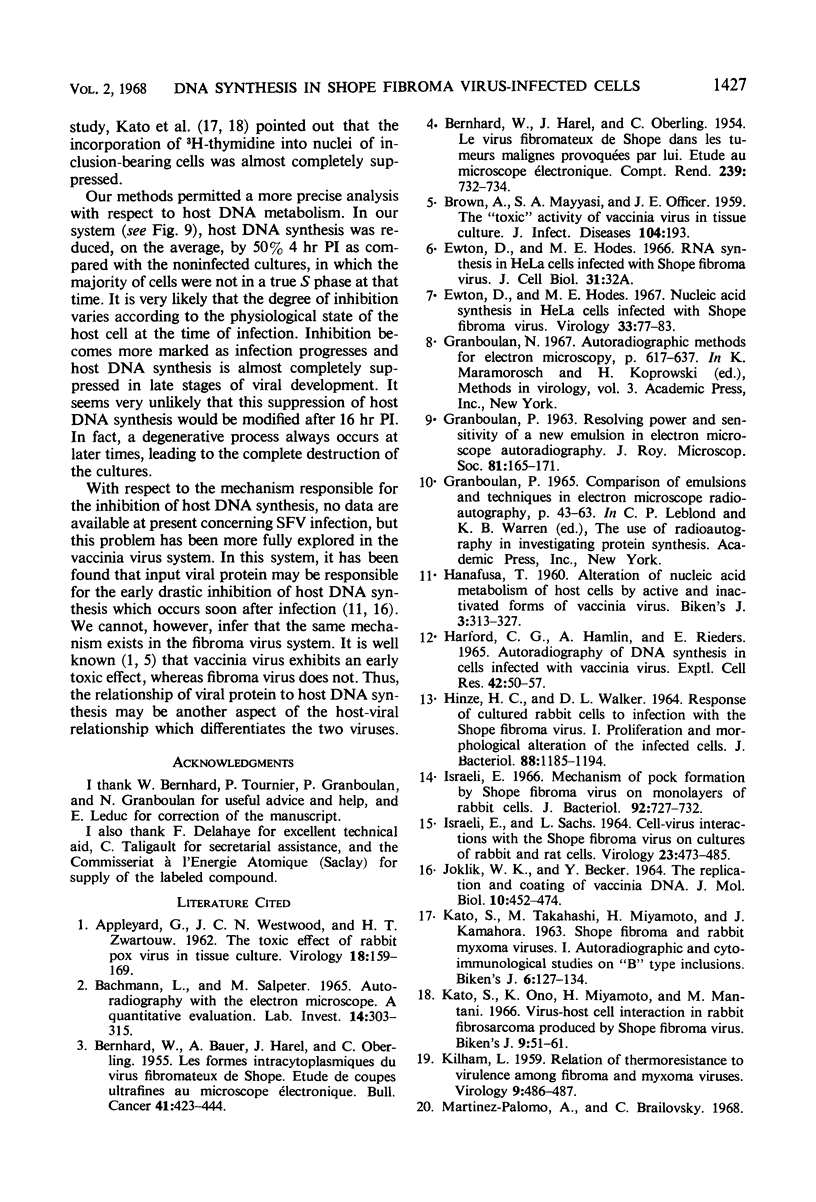
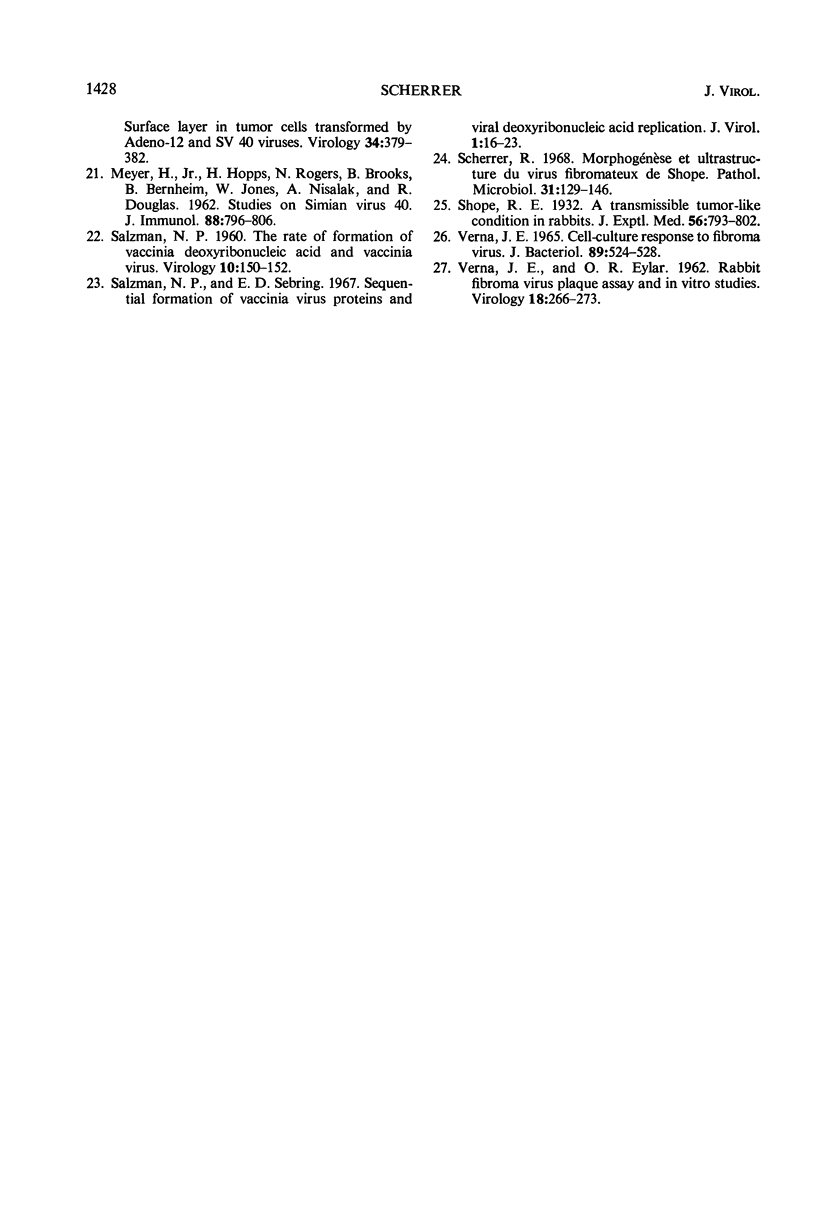
Images in this article
Selected References
These references are in PubMed. This may not be the complete list of references from this article.
- APPLEYARD G., WESTWOOD J. C., ZWARTOUW H. T. The toxic effect of rabbitpox virus in tissue culture. Virology. 1962 Oct;18:159–169. doi: 10.1016/0042-6822(62)90001-6. [DOI] [PubMed] [Google Scholar]
- BERNHARD W., BAUER A., HAREL J., OBERLING C. Les formes intracytoplasmiques du virus fibromateux de Shope; études de coupes ultrafines au microscope électronique. Bull Assoc Fr Etud Cancer. 1954;41(4):423–444. [PubMed] [Google Scholar]
- BERNHARD W., HAREL J., OBERLING C. Le virus fibromateux de Shope dans des tumeurs malignes provoquées par lui; étude au microscope électronique. C R Hebd Seances Acad Sci. 1954 Sep 20;239(12):732–734. [PubMed] [Google Scholar]
- BROWN A., MAYYASI S. A., OFFICER J. E. The toxic activity of vaccinia virus in tissue culture. J Infect Dis. 1959 Mar-Apr;104(2):193–202. doi: 10.1093/infdis/104.2.193. [DOI] [PubMed] [Google Scholar]
- COULSON W. F., WEISSMAN N., CARNES W. H. CARDIOVASCULAR STUDIES ON COPPER-DEFICIENT SWINE. VII. MECHANICAL PROPERTIES OF AORTIC AND DERMAL COLLAGEN. Lab Invest. 1965 Mar;14:303–309. [PubMed] [Google Scholar]
- Ewton D., Hodes M. E. Nucleic acid synthesis in HeLa cells infected with Shope fibroma virus. Virology. 1967 Sep;33(1):77–83. doi: 10.1016/0042-6822(67)90095-5. [DOI] [PubMed] [Google Scholar]
- HINZE H. C., WALKER D. L. RESPONSE OF CULTURED RABBIT CELLS TO INFECTION WITH THE SHOPE FIBROMA VIRUS. I. PROLIFERATION AND MORPHOLOGICAL ALTERATION OF THE INFECTED CELLS. J Bacteriol. 1964 Oct;88:1185–1194. doi: 10.1128/jb.88.4.1185-1194.1964. [DOI] [PMC free article] [PubMed] [Google Scholar]
- Harford C. G., Hamlin A., Rieders E. Electron microscopic autoradiography of DNA synthesis in cells infected with vaccinia virus. Exp Cell Res. 1966 Apr;42(1):50–57. doi: 10.1016/0014-4827(66)90318-1. [DOI] [PubMed] [Google Scholar]
- ISRAELI E., SACHS L. CELL-VIRUS INTERACTIONS WITH THE SHOPE FIBROMA VIRUS ON CULTURES OF RABBIT AND RAT CELLS. Virology. 1964 Aug;23:473–485. doi: 10.1016/0042-6822(64)90231-4. [DOI] [PubMed] [Google Scholar]
- Israeli E. Mechanism of pock formation by Shope fibroma virus on monolayers of rabbit cells. J Bacteriol. 1966 Sep;92(3):727–732. doi: 10.1128/jb.92.3.727-732.1966. [DOI] [PMC free article] [PubMed] [Google Scholar]
- JOKLIK W. K., BECKER Y. THE REPLICATION AND COATING OF VACCINIA DNA. J Mol Biol. 1964 Dec;10:452–474. doi: 10.1016/s0022-2836(64)80066-8. [DOI] [PubMed] [Google Scholar]
- KATO S., TAKAHASHI M., MIYAMOTO H., KAMAHORA J. SHOPE FIBROMA AND RABBIT MYXOMA VIRUSES. I. AUTORADIOGRAPHIC AND CYTOIMMUNOLOGICAL STUDIES ON "B" TYPE INCLUSIONS. Biken J. 1963 Jul;6:127–134. [PubMed] [Google Scholar]
- KILHAM L. Relation of thermoresistance to virulence among fibroma and myxoma viruses. Virology. 1959 Nov;9:486–487. doi: 10.1016/0042-6822(59)90140-0. [DOI] [PubMed] [Google Scholar]
- MEYER H. M., Jr, HOPPS H. E., ROGERS N. G., BROOKS B. E., BERNHEIM B. C., JONES W. P., NISALAK A., DOUGLAS R. D. Studies on simian virus 40. J Immunol. 1962 Jun;88:796–806. [PubMed] [Google Scholar]
- Martinez-Palomo A., Brailovski C. Surface layer in tumor cells transformed by adeno-12 and SV40 viruses. Virology. 1968 Feb;34(2):379–382. doi: 10.1016/0042-6822(68)90255-9. [DOI] [PubMed] [Google Scholar]
- SALZMAN N. P. The rate of formation of vaccinia deoxyribonucleic acid and vaccinia virus. Virology. 1960 Jan;10:150–152. doi: 10.1016/0042-6822(60)90015-5. [DOI] [PubMed] [Google Scholar]
- Salzman N. P., Sebring E. D. Sequential formation of vaccinia virus proteins and viral deoxyribonucleic acid replication. J Virol. 1967 Feb;1(1):16–23. doi: 10.1128/jvi.1.1.16-23.1967. [DOI] [PMC free article] [PubMed] [Google Scholar]
- Scherrer R. Morphogénèse et ultrastructure du virus fibromateux de Shope. Pathol Microbiol (Basel) 1968;31(3):129–146. [PubMed] [Google Scholar]
- VERNA J. E. CELL-CULTURE RESPONSE TO FIBROMA VIRUS. J Bacteriol. 1965 Feb;89:524–528. doi: 10.1128/jb.89.2.524-528.1965. [DOI] [PMC free article] [PubMed] [Google Scholar]
- VERNA J. E., EYLAR O. R. Rabbit fibroma virus plaque assay and in vitro studies. Virology. 1962 Oct;18:266–273. doi: 10.1016/0042-6822(62)90013-2. [DOI] [PubMed] [Google Scholar]



